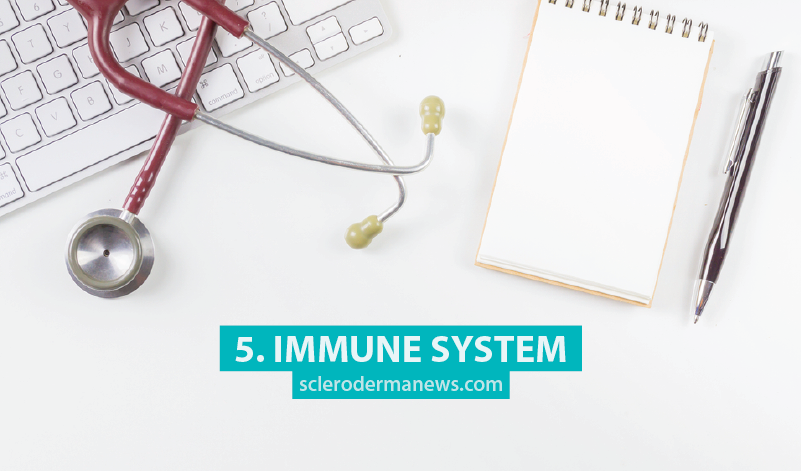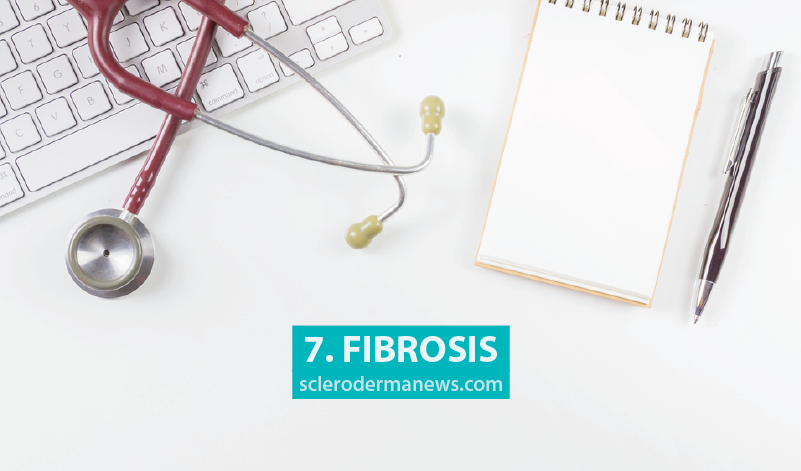10 Important Terms for Scleroderma You Should Know About
Written by |

Certain terms that a scleroderma patient will hear over and over from doctors, physicians, and even fellow patients can sound totally alien — at first. Here’s what some of those terms mean in everyday language, according to the Scleroderma Foundation.

1. Arthralgia
“Pain in a joint.”
Learn more about muscle, joint, and nerve pain in scleroderma patients.

2. Autoimmune
“Disease or antibody, which acts against the person’s own tissues.”
Looking for more information? Here are 10 Autoimmune Facts and Statistics

3. Collagen
“A normal, fibrous protein found in the connective tissue of the body.”

4. Connective tissue
“Tissue, which pervades, supports and binds together other tissues including mucous, fibrous, reticular, adipose, cartilage, skin, and bone. Connective-tissue diseases are a group of diseases with similar cellular changes, but with the site where the changes occur determining the specific disease. Included are scleroderma, systemic lupus erythematosus, dermatomyositis, and rheumatoid arthritis.”

5. Immune system
“The system of organs, cells and proteins, which protect the body from foreign substances by producing immune responses. The immune system organs include the thymus, spleen, lymph nodes and bone marrow. The cells include white cells, lymphocytes, T cells and B cells. Immunoglobulins (antibodies) are proteins that can react with and/or neutralize corresponding proteins called antigens (usually damaged or foreign material). The immune system is essentially protective and helpful to the body, but can be the cause of disease and allergy when it attacks parts of the normal body in a process called autoimmunity.”
Looking for more information? Here are 10 Autoimmune Facts and Statistics

6. Dysphagia
“Difficulty in swallowing.”
Throughout June, our resident blogger and scleroderma patient Nicola Whitehill posted information and facts daily about scleroderma to commemorate Scleroderma Awareness Month.
See the post that Nicola dedicated to lower gastro-intestinal track involvement in scleroderma.

7. Fibrosis
“Abnormal formation of excess fibrous (consisting of, or resembling fibers) tissue.”
Learn more about mice with scleroderma that were protected from fibrosis by hydrogen sulfide.

8. Raynaud phenomenon
“Also called Raynaud Syndrome. A disorder with recurring spasms of the small blood vessels upon exposure to cold; characterized by fingers and toes turning white, blue, and red as circulation abnormally overreacts to normal conditions. Emotional stress may also trigger an attack. Named after the French physician (Dr. Maurice Raynaud, pronounced “Raynode”) who first described it.”
Here are 7 Facts You Should Know About Raynaud’s.

9. Prognosis
“Prediction of the progression and end result of a disease, or estimate of chance of recovery.”

10. Remission, spontaneous remission
“A period during which the symptoms of a disease decrease or go away. If the reason for remission is not related to treatment but seems to occur for no apparent reason, it is called spontaneous.”
Learn more about the scleroderma patient in long-term remission with TPE treatment.
Scleroderma News is strictly a news and information website about the disease. It does not provide medical advice, diagnosis or treatment. This content is not intended to be a substitute for professional medical advice, diagnosis, or treatment. Always seek the advice of your physician or another qualified health provider with any questions you may have regarding a medical condition. Never disregard professional medical advice or delay in seeking it because of something you have read on this website.





